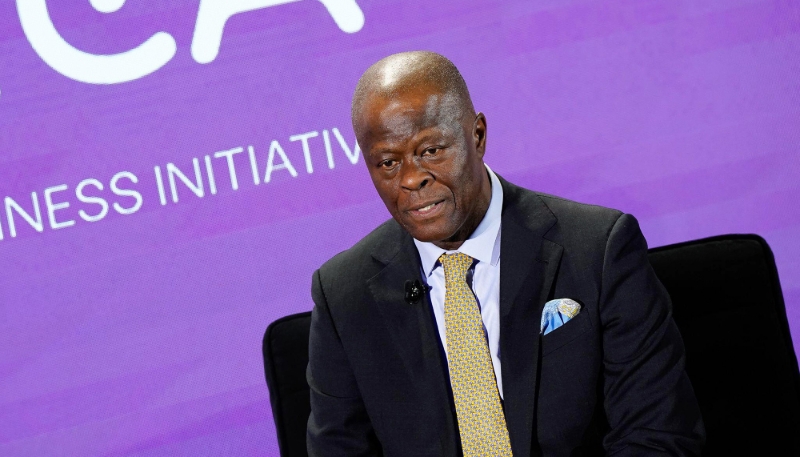Fiscal discipline anchors Nigeria's reform credibility
Nigeria’s revenue-recovery plan aims to lift non-oil receipts and cut the deficit; if arrears exceed ₦1 trillion and NGN=X stays near ₦1,600, spreads on Eurobonds and CL=F-linked fiscal flows could tighten by mid-2026.

Nigeria’s decision to initiate a comprehensive nationwide drive to recover government revenue marks a decisive shift toward institutional fiscal consolidation. With nominal GDP at approximately US$188 billion for 2025 (per IMF WEO current-price estimate) and real GDP growth projected at 3.4 % in 2025 (up from 3.0 % in April) the government’s capacity to expand fiscal buffers without structural change remains constrained. The country’s total public debt stood at ₦152.40 trillion (≈US$93 billion at ₦1,640/US$) as of 30 June 2025; this debt-to-GDP ratio of about 49 % substantially narrows the margin for manoeuvre when revenue collection remains weak.
The mechanism driving the reform agenda involves audits, digital remittance platforms for ministries and state-owned enterprises, and stricter enforcement of operating-surplus transfers. Historically, Nigeria’s tax revenue has languished in the 7–8 % of GDP range, while public-enterprise non-remittances and underlying arrears have persisted. By targeting even a 1 %-of-GDP uplift (≈US$1.9 billion) in non-oil revenue over a 12-month period, authorities could compress the fiscal deficit from an estimated 6 % of GDP to around 5 % of GDP—holding expenditure constant—thus easing pressure on net borrowing.
Transmission to the macroeconomy occurs via several channels. First, higher cash receipts reduce the dependence on central-bank overdrafts and quasi-fiscal funding, strengthening the monetary-fiscal boundary and restoring policy credibility. Secondly, if borrowing needs decline, local sovereign yields may fall; Nigeria’s central bank recently cut its policy rate by 50 bps to 27.0 % on 23 September 2025—the first cut since 2020—citing headline inflation easing to 18.02 % in September from 20.12 % in August. This macro-link signals that revenue discipline supports disinflation and opens room for monetary accommodation. Thirdly, improved fiscal metrics attract foreign capital: growth in sovereign issuance becomes less about deficit funding and more about term-structure extension and investor diversification.
From an investor-relevance viewpoint the story extends beyond domestic aggregates. Hard-currency sovereign yield differentials in Nigerian Eurobonds currently harbour premium driven largely by execution risk rather than solvency. If this reform reduces the annual borrowing requirement by 1 % of GDP, it could narrow spreads versus African peers and enhance portfolio allocations into NGN-denominated assets. For example, better fiscal-monetary coordination could shift USD/NGN (ticker NGN=X) stability favourite, particularly given global commodity cycles: Brent crude futures (CL=F) remaining in the US$80–85 / barrel range keep oil revenues subdued, elevating the criticality of non-oil fiscal enforcement.
Historically comparable measures offer precedent: other emerging economies that implemented sweeps, single-treasury accounts and remittance-enforcement regimes achieved revenue gains of 1.5–2.0 % of GDP over 18–24 months. Nigeria’s scale is larger, so even partial delivery would generate material budget relief. For Nigeria, converting structural compliance improvements into net-new revenue is the signal: the shift from ad hoc tax-hikes toward durable collection efficiency marks institutional maturation.
Forward indicators are definable. By end-December 2025, authorities should aim for cumulative remitted arrears of at least ₦1 trillion (~US$610 million), a fall in the interest-to-revenue ratio by at least 5 percentage points versus year-end 2024, and a refinancing requirement reduction of at least 1 % of GDP (~US$1.9 billion) in FY2026. If these thresholds are met and sustained to June 2026, expect sovereign spreads to compress, local yields to roll down the curve, and NGN=X to stabilise within the low-₦1,600 range supported by improved receipt momentum.
This reform agenda signals a critical inflection: credible revenue recovery, if sustained, becomes the linchpin for budget stabilisation, monetary policy space and investor confidence in Nigeria’s institutional trajectory. It moves the narrative from cyclical adjustment to structural credibility rebuild.





